BMW’s rich history at the Isle of Man TT
Imagery courtesy of the Greening and BMW archives
The TT turned 110 years old in 2017, and BMW owns a share of the glory years. With 265 corners in 37.73 miles (60.66km) the Isle of Man Mountain circuit is the most physically punishing and mechanically exacting in the world. The route passes through three sleepy villages and one seaside town, climbs over 1,000ft (300 metres) in less than a mile (1.6 km) and reaches 1384ft (454 metres) over Snaefell Mountain.
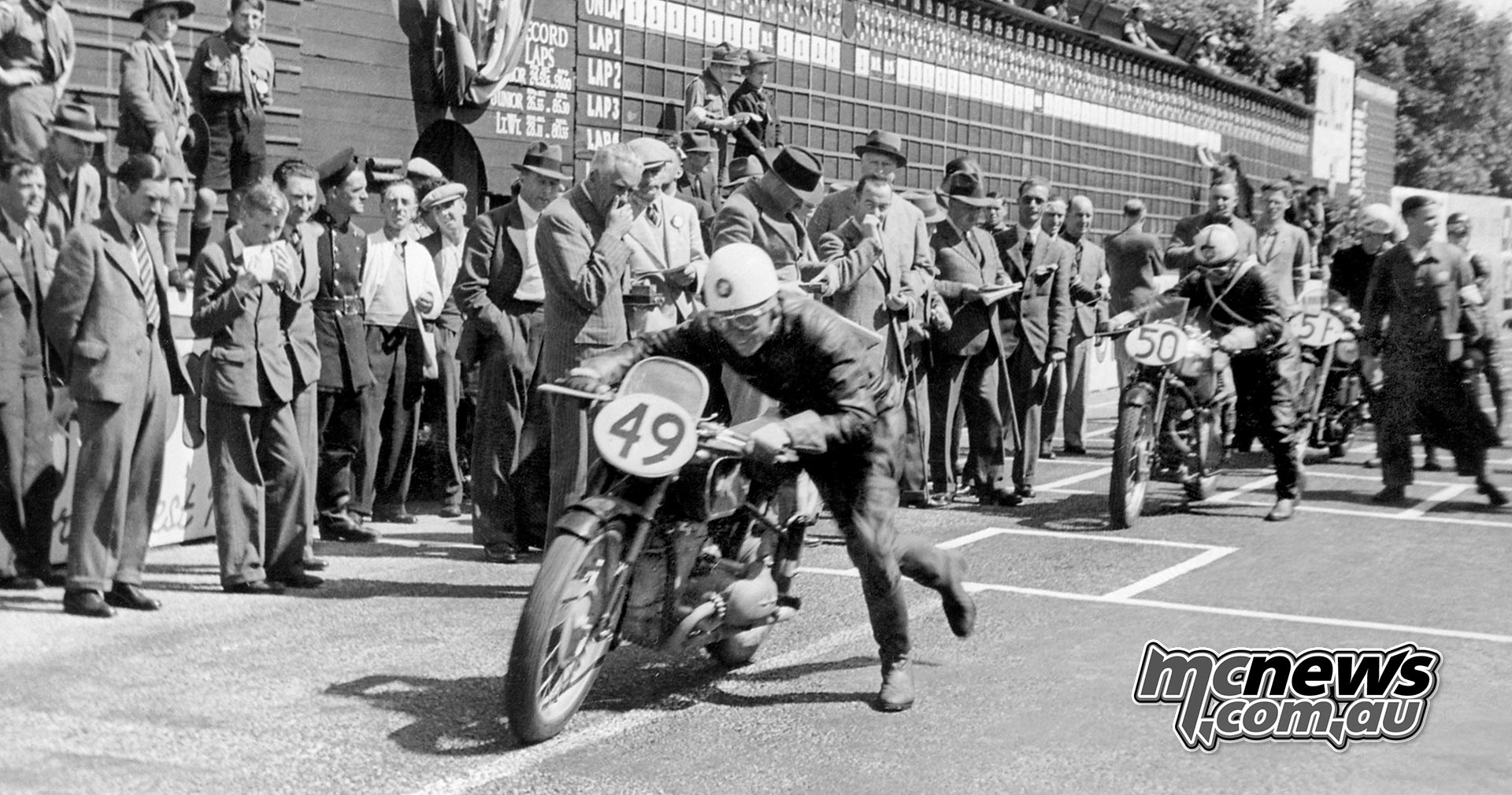
In spite of travelling at speeds over 180mph (290 km/h), there is no point at which the rider can see as far as one mile (1.6 km) ahead. And the straight parts are far from smooth, testing a bike’s suspension to the limit.
Pretty white-walled cottages and winding country roads bordered by stone walls, picturesque pubs and leafy glades are all part of the TT. On what other racetrack do riders cross roundabouts, go through traffic lights, power down suburban streets at full throttle with the front doors of terraced houses just centimetres away? Where else do racers count tramlines, telegraph poles and farm animals as normal hazards?
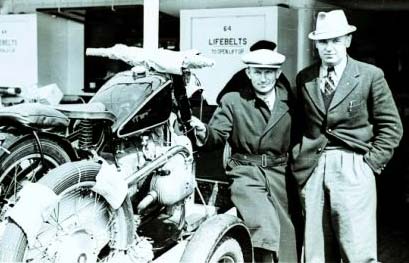
The first TT took place on 28 May 1907 with 13 single cylinder machines competing for a silver statue of the Greek god Mercury, complete with winged helmet. A separate class for multi-cylinder machines attracted six entries. Riders set off in pairs to race against the clock – a feature of future TTs.
The famous 37.73-mile Mountain course was first used in 1911 and BMW first contested the Isle of Man TT – which had become the most important race in the world – in 1937. But it didn’t look like the Bavarians were taking it too seriously. Their rider was Jock West, who worked for Frazer Nash, the BMW sports car importer. West was a good racer, but not in the same league as Norton works rider Freddie Frith, or Velocette’s Stanley Woods. And West didn’t speak German, which meant communicating with his mechanic wasn’t easy!
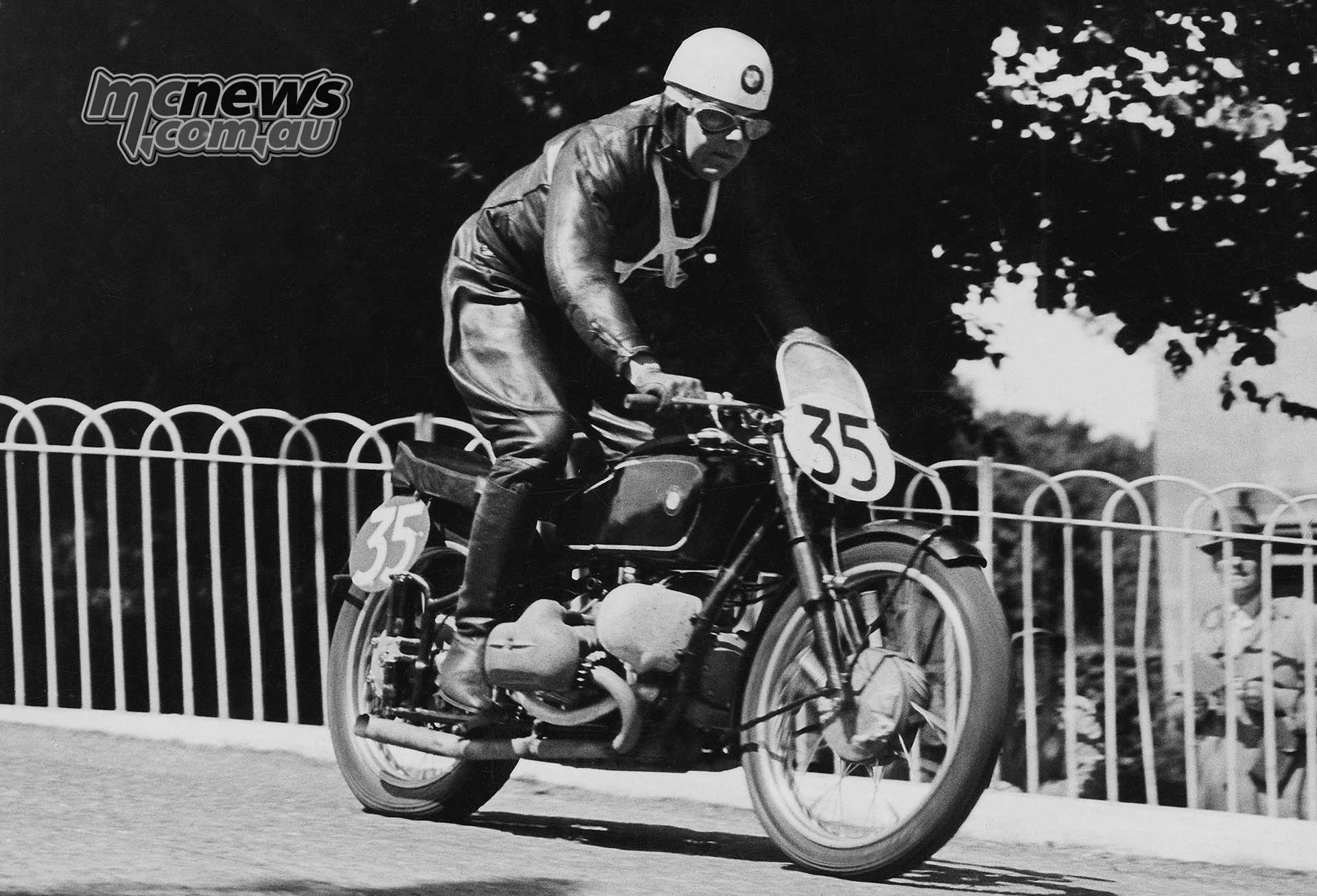
With plunger rear suspension and advanced telescopic forks the oil-tight BMW gleamed with a showroom finish and drew admiring glances from everyone – especially when West showed how well it handled. The compact Zoller supercharger evened up the odds over the British singles and better riders.
West was making the best of his 50 hp, holding fourth place for the first four laps until his petrol tank split and he ran out of gas at Governor’s Bridge. He pushed in for more petrol. He had to take on more gas on the sixth lap, but still finished an incredible sixth at 81.3mph. Frith won at 88.21mph. West didn’t make the podium, but BMW had high hopes for 1938.
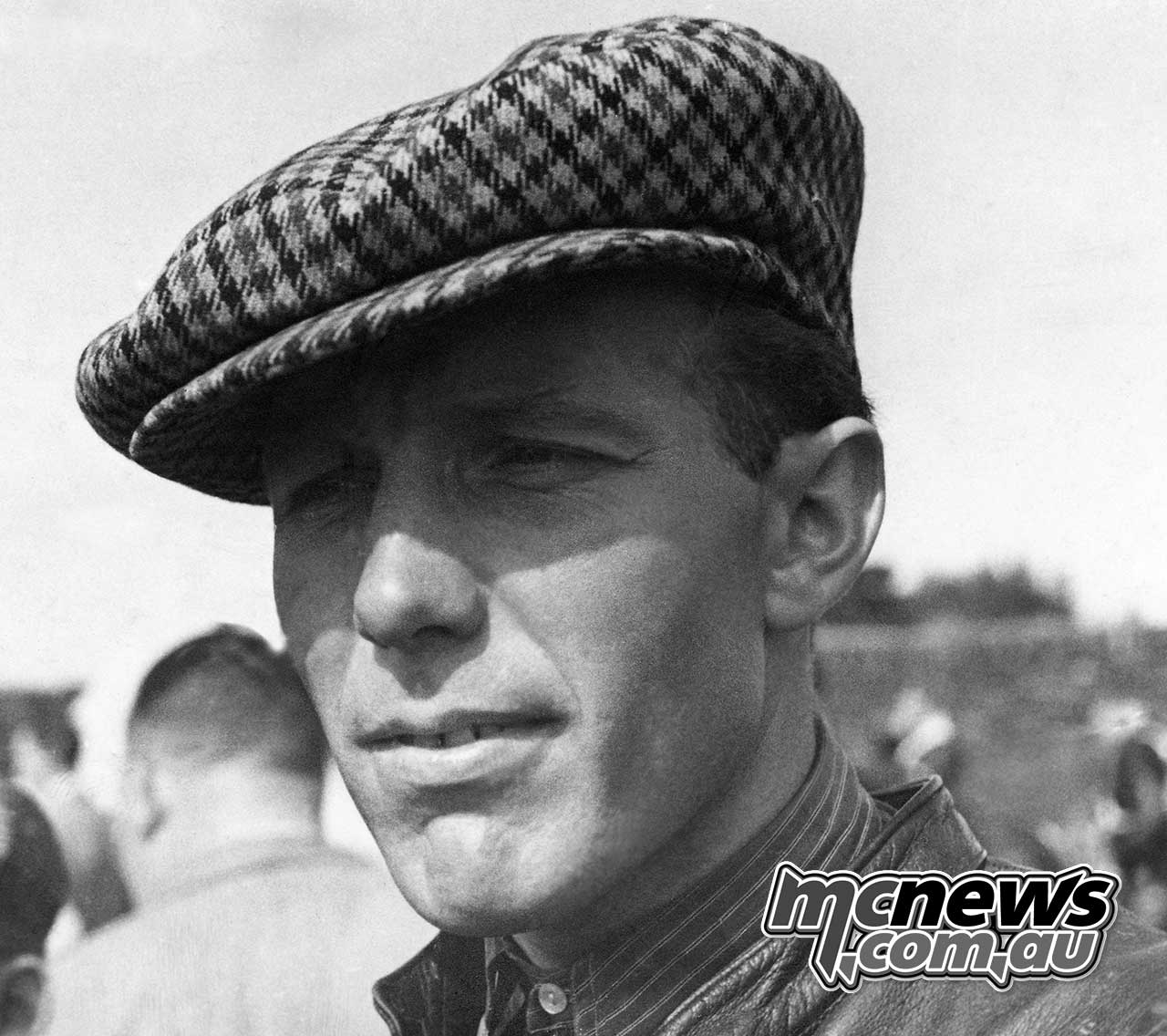
BMW’s star rider Karl Gall, Georg Meier and West spent two weeks in April preparing for the June races the following year. But with more powerful engines the handling seemed to suffer. Meier crashed in practice, escaping with bruises and a battered ego. And Gall crashed heavily when he was riding the wrong way round the course, to meet technicians who were going to set up his carburetion on the Mountain mile. He spent the next weeks in Ramsey hospital.
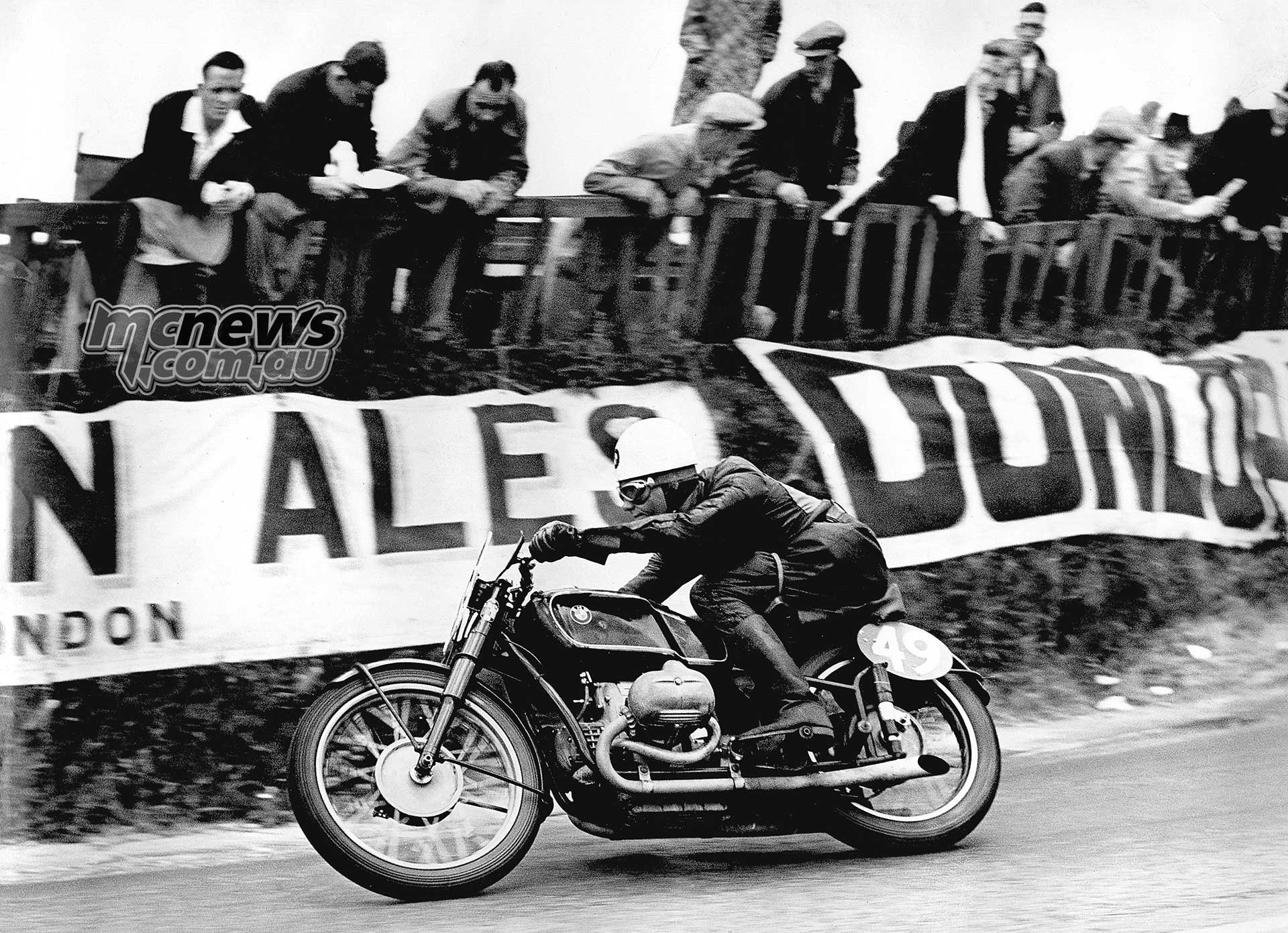
In the Senior TT, Meier went out before finishing a single lap – his magneto failed at the bottom of Bray Hill. Jock West held onto fifth place for all seven laps, finishing just 4 min 36 sec slower than the winning Norton. He had been told to finish at all costs, so never rode all-out.
Gall, Meier and West were back for the 1939 TT, but the results were bitter sweet for BMW. Gall crashed again in practice and was taken once again to Ramsey hospital. He was operated on by BMW’s own surgeon, but died on the eve of the Senior TT.
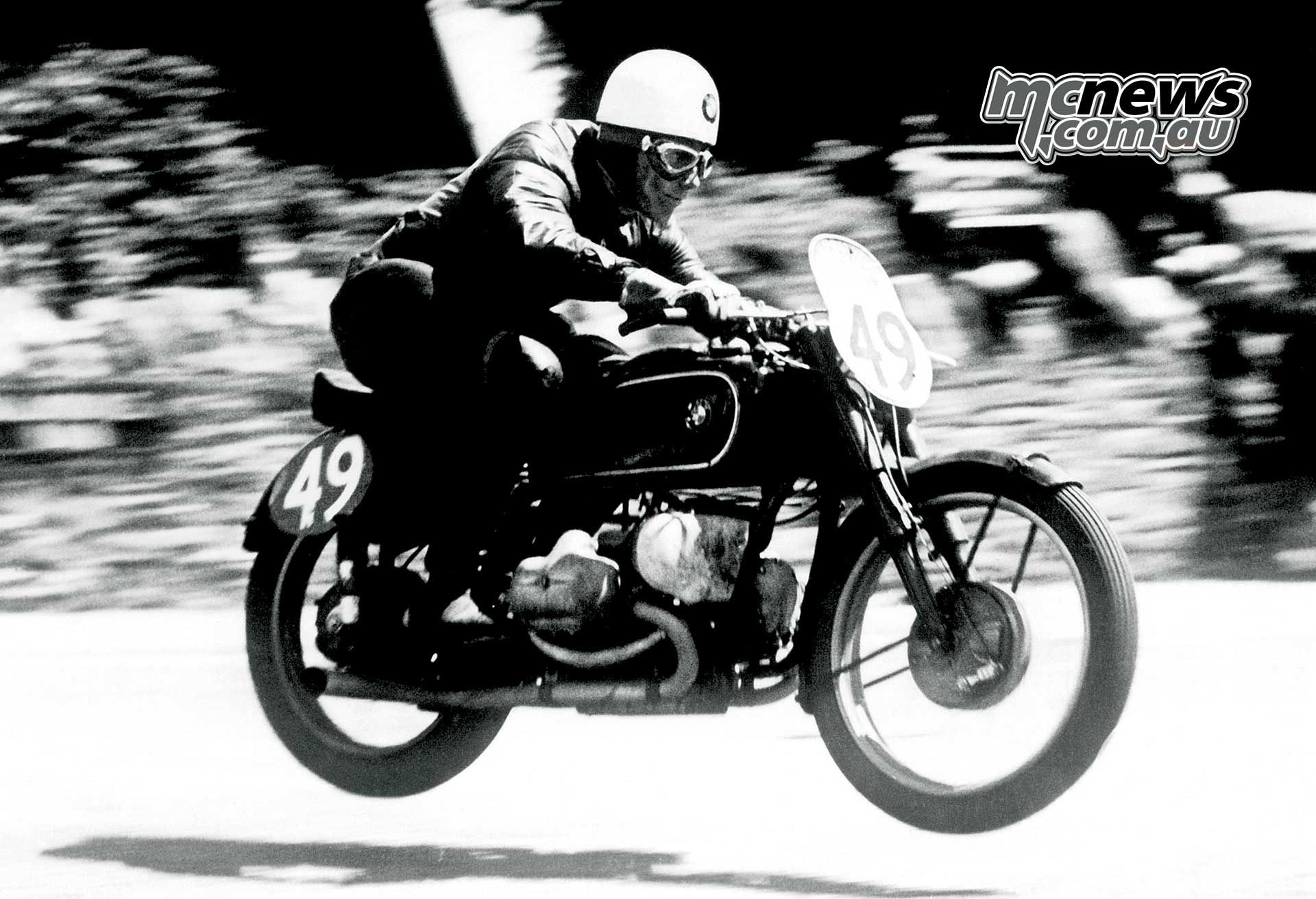
Meier was on a mission. With a whispered 70 hp and a top speed of 140mph (225 km/h) available from the supercharged twin (at 137kg the BMW was also the lightest Senior bike) he simply blasted the opposition into the weeds.
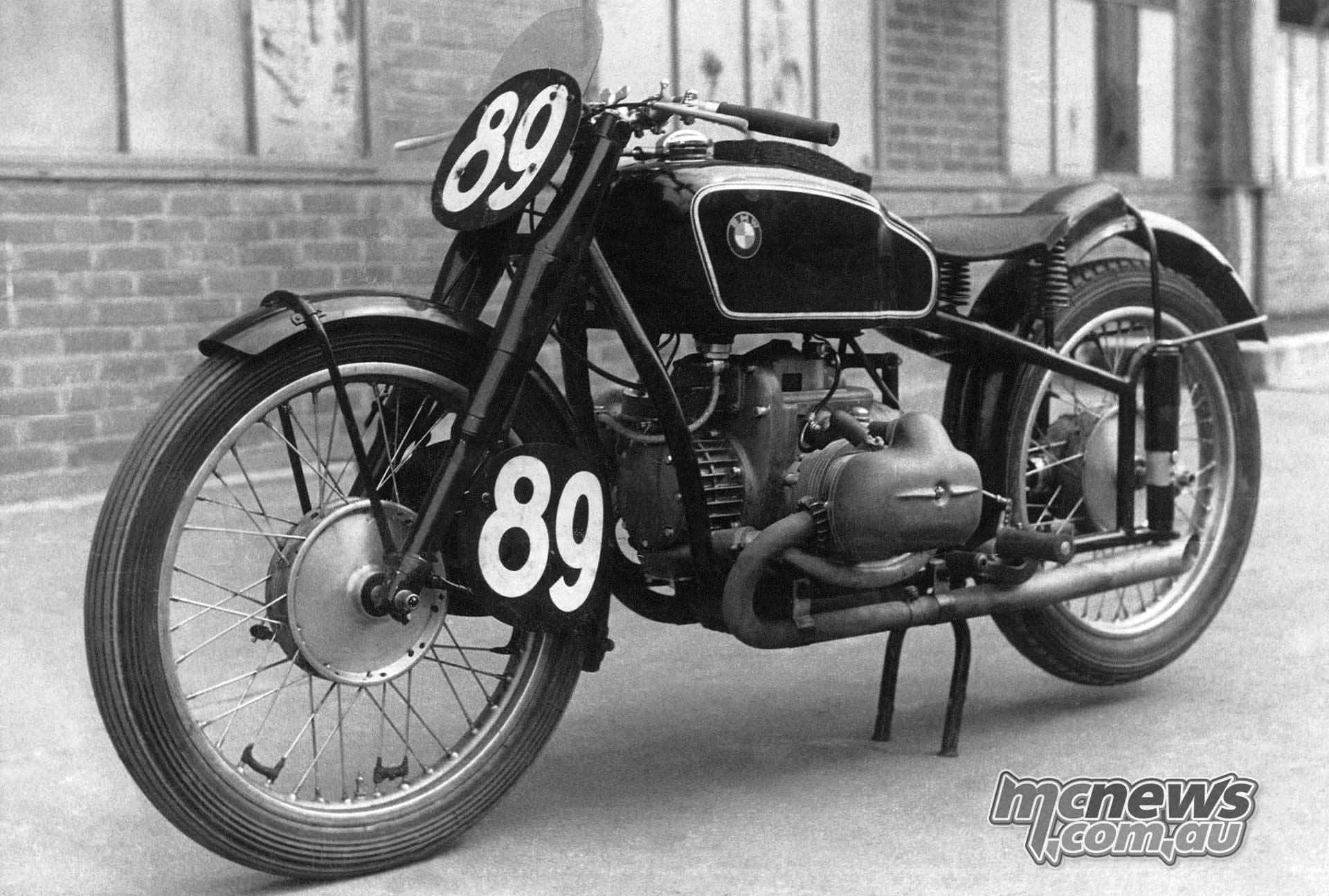
Georg set a new race record at 89.38mph (143 km/h), with Jock coming home second at 88.22mph (141 km/h). There was no doubt that if Gall had not crashed it would have been a BMW 1-2-3. The supercharged Boxers were simply years ahead of the opposition.
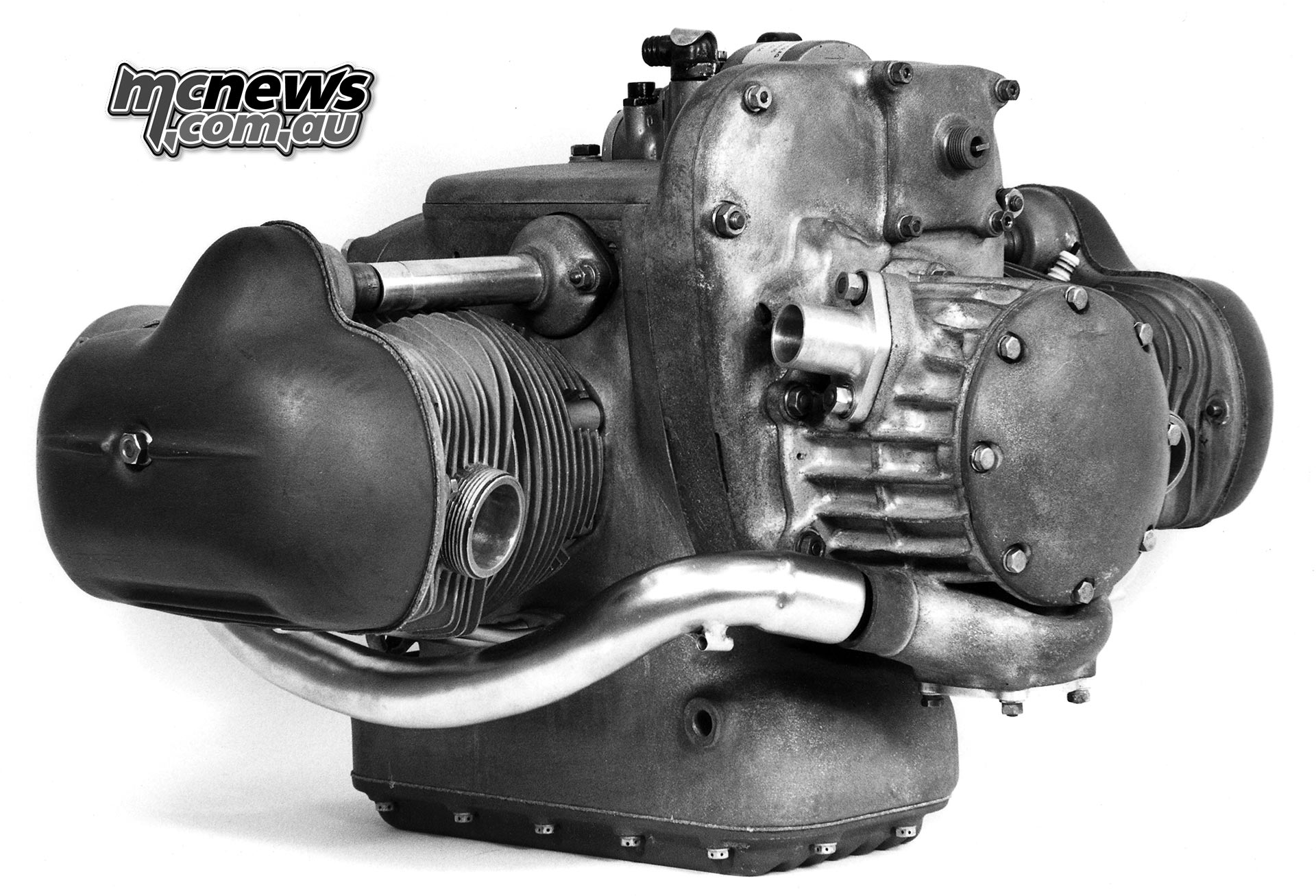
The Fédération Internationale Motorcycliste (FIM) banned superchargers in 1946, which meant that BMW’s solo racers were finished for the moment. But their sidecars were soon to rule the Mountain. Except for the use of direct petrol injection on early models, the Rennsport BMW was not exotic machinery.
The flat twin may not have been the most powerful engine, but it was perfect for sidecar racing. The engine had a low centre of gravity, ideal cooling, a nice spread of power, and reliable shaft-drive. The list of drivers who have won a TT thanks to BMW power reads like a ‘who’s who’ of racing greats: Schneider, Hillebrand, Fath, Deubel, Camathias, Scheidegger, Schauzu and Enders.
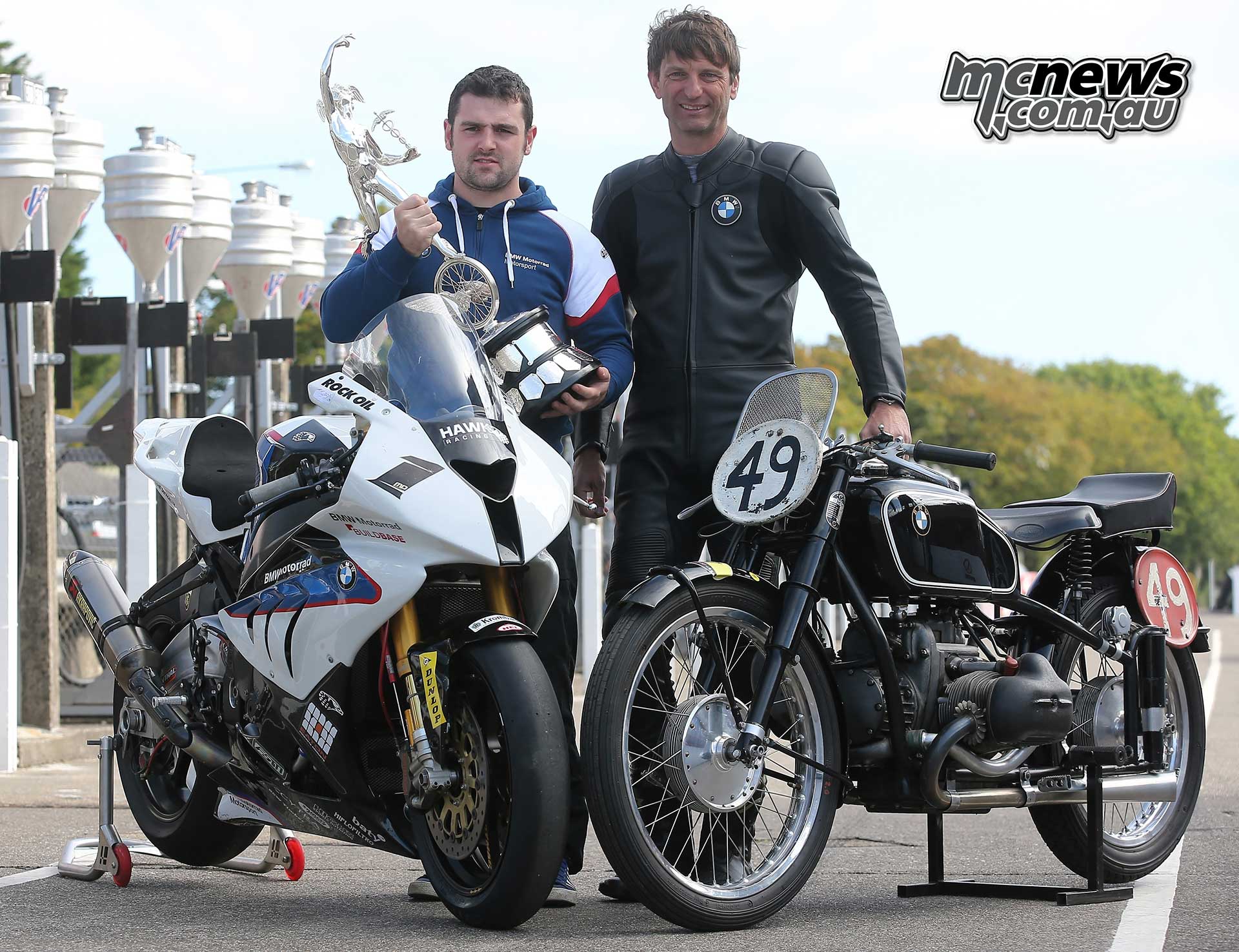
The Rennsport twin, developed by Alex von Falkenhausen, monopolised the TT for the next 20 years and the grip of the flat-twin BMW engine continued until 1974, when Yamaha two-stroke power screamed out the Boxers in the smaller class – although German driver Luthringhauser still won the race. The last BMW sidecar victory was in 1975, when Schauzu won the new 1000cc class.
But then along came Helmut Dähne, one of the most popular heroes to race in the Production TT in the seventies. The tall, lanky German won his army of fans because was a true enthusiast who prepared his own bike, rode it all the way from Munich to the Island, raced it over the Mountain, and then rode it home again.
At first glance, his Isle of Man bike looked like an ordinary R 90 S, but the chassis was basically a stock short wheelbase R 75/5 with the same forks and rear shock absorbers as the road bikes.
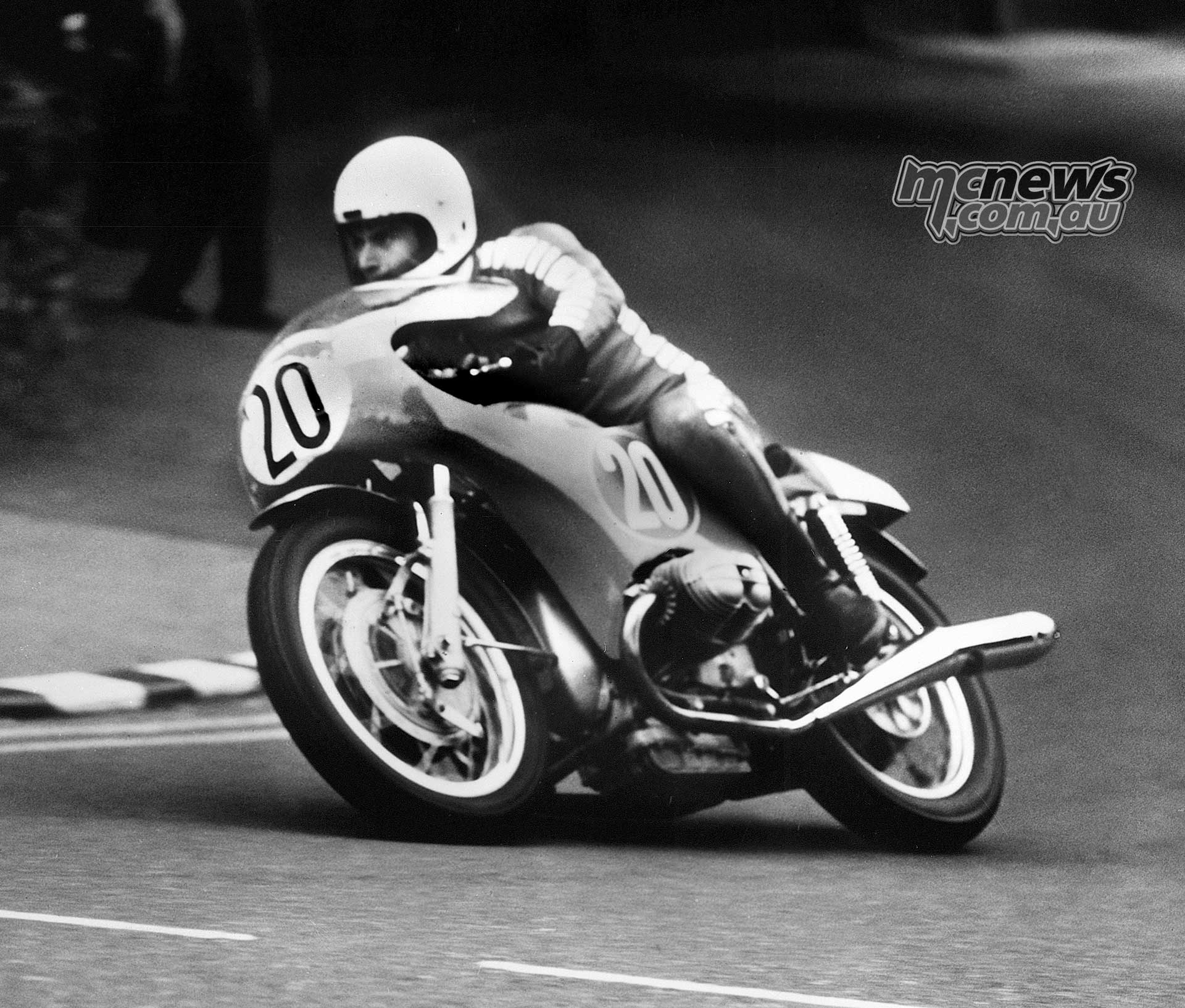
But the engine was a very special R 90 S, fitted with high compression pistons, race cams and bigger valves, titanium con rods, close ratio gears, a deeper sump to carry more oil, big bore carbs and a race exhaust system. But this was no factory special – Dähne built his bike himself.
In 1974 he finished third in the 1000cc Production TT behind fellow German Hans-Otto Butenuth on another BMW, with Brit Mick Grant on the Triumph Trident Slippery Sam in first place. A year later Dähne was back and leading the 362-km six-lap race when a stone punched a hole through the right-side rocker box cover and he lost so much oil that the engine seized.
It was the only time he failed to finish a race. The rocker box had been worn thin by Dähne’s enthusiastic cornering, and in later years he raced with a spare strapped to the frame under the seat.
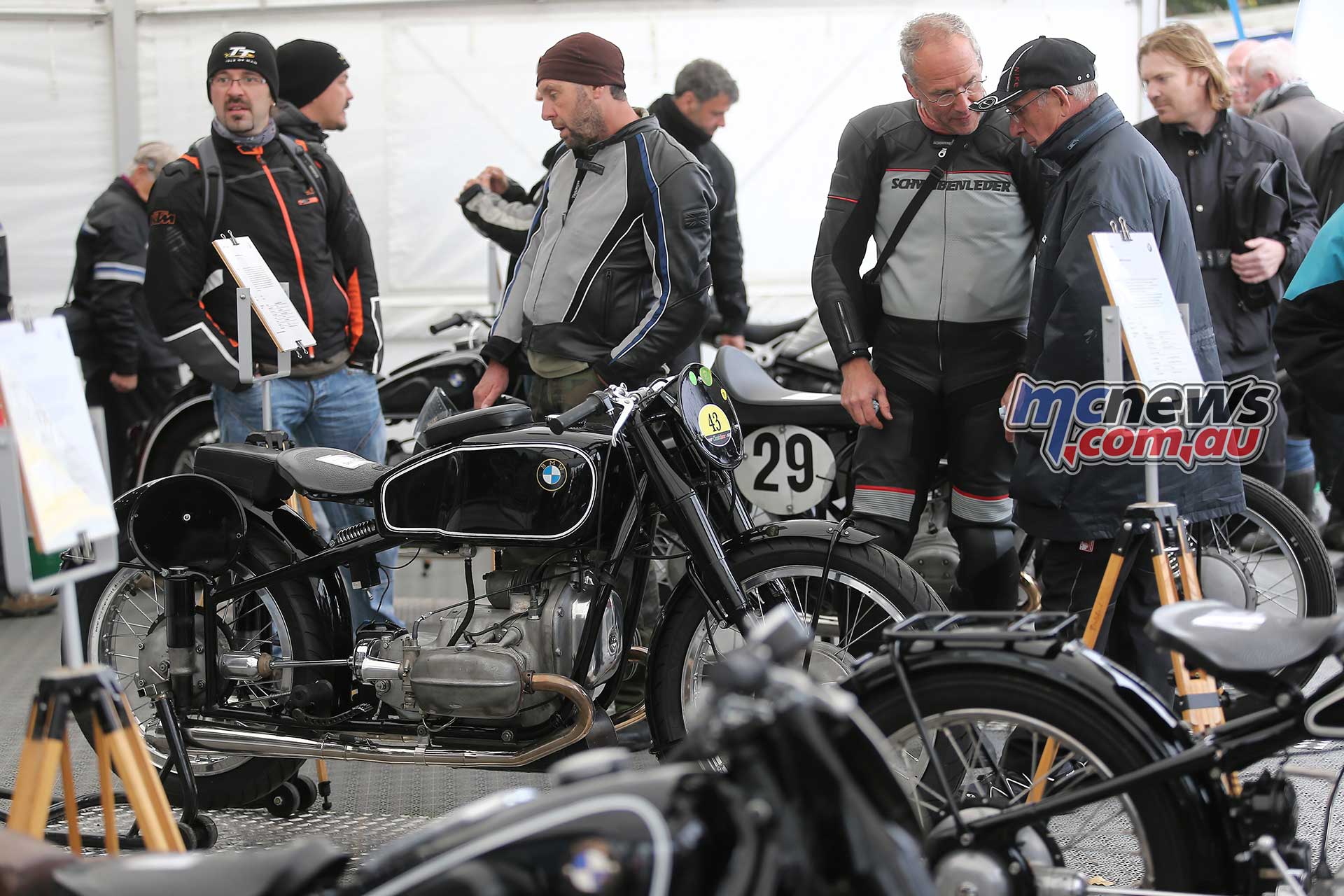
He finally won a TT in 1976 when Butenuth partnered him in the 10-lap 1000cc Production race. Close to the end of his final practice session, a loose valve seat caused the exhaust valve to break, badly damaging the cylinder head and he had no spares. Any other rider would have retired, but Dähne asked a BMW rider who was watching the racing if he could borrow his cylinder head, and the rest is history. It was an amazing result for a part-time racer on a bike that everyone thought would be no match for the Laverda triples and Ducati V-twins.
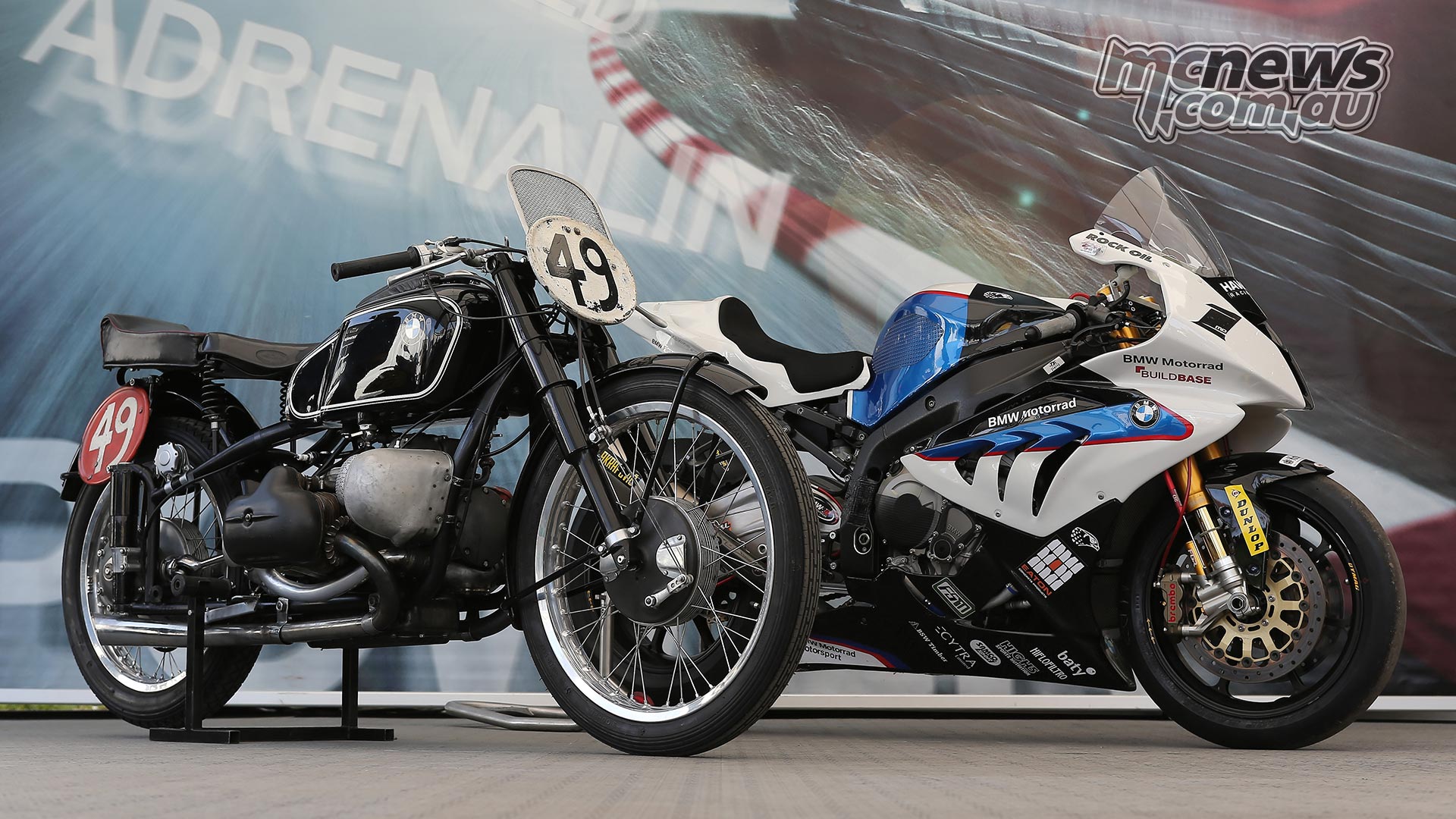
The TT lost its grand prix status in 1976. But the Isle of Man’s popularity with race fans has never waned and crowds still make the crossing over the Irish Sea every June. And the racing is never short of thrills.
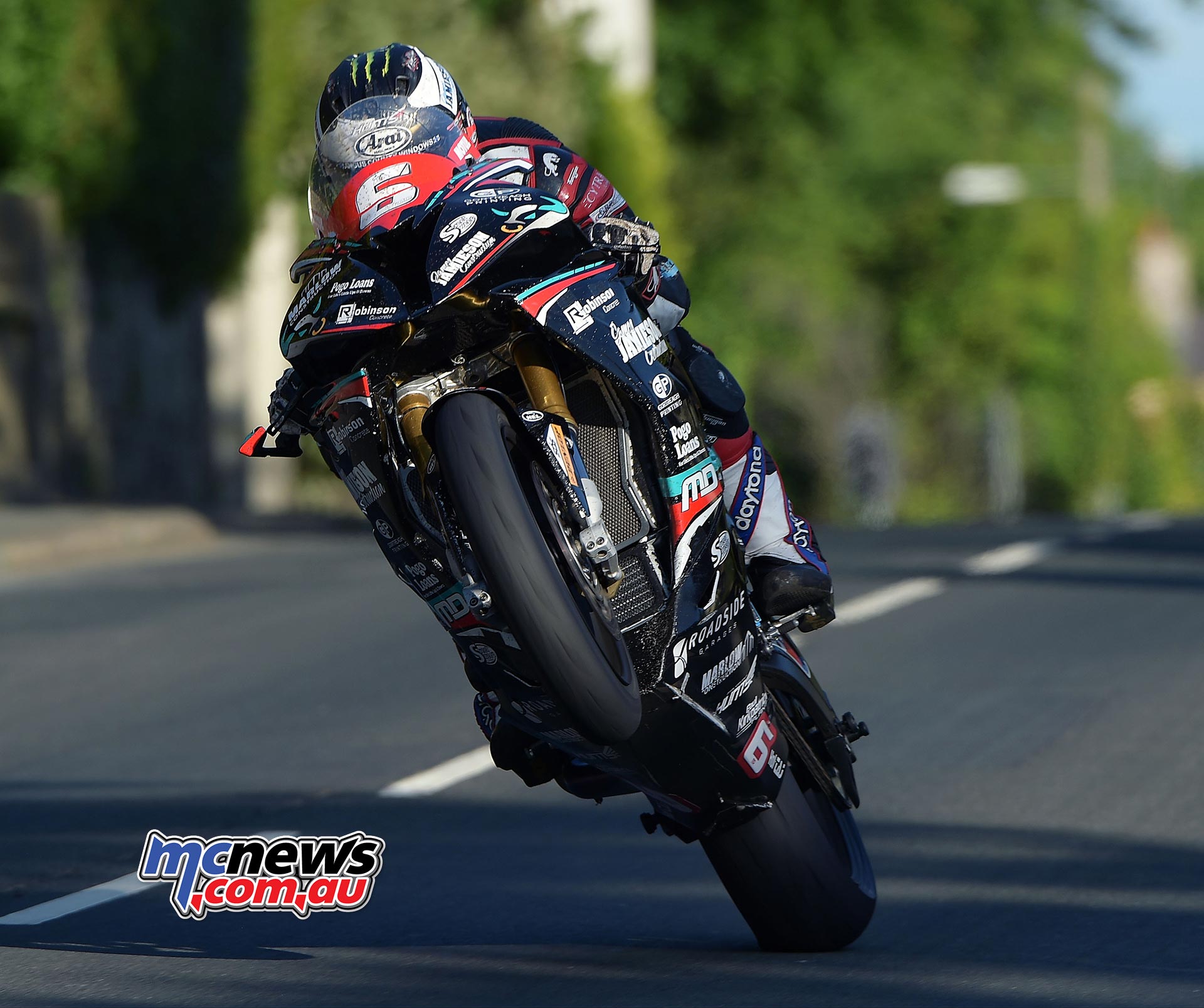
Michael Dunlop currently holds the outright lap record, with a 133.962mph (215.591km/h) lap on a BMW S 1000 RR, as well as the Superbike TT lap record 133.393mph (214.675km/h) on a BMW, while Ian Hutchinson also holds the Superstock TT record on a BMW S 1000 RR at 133.098mph (214.200km/h).
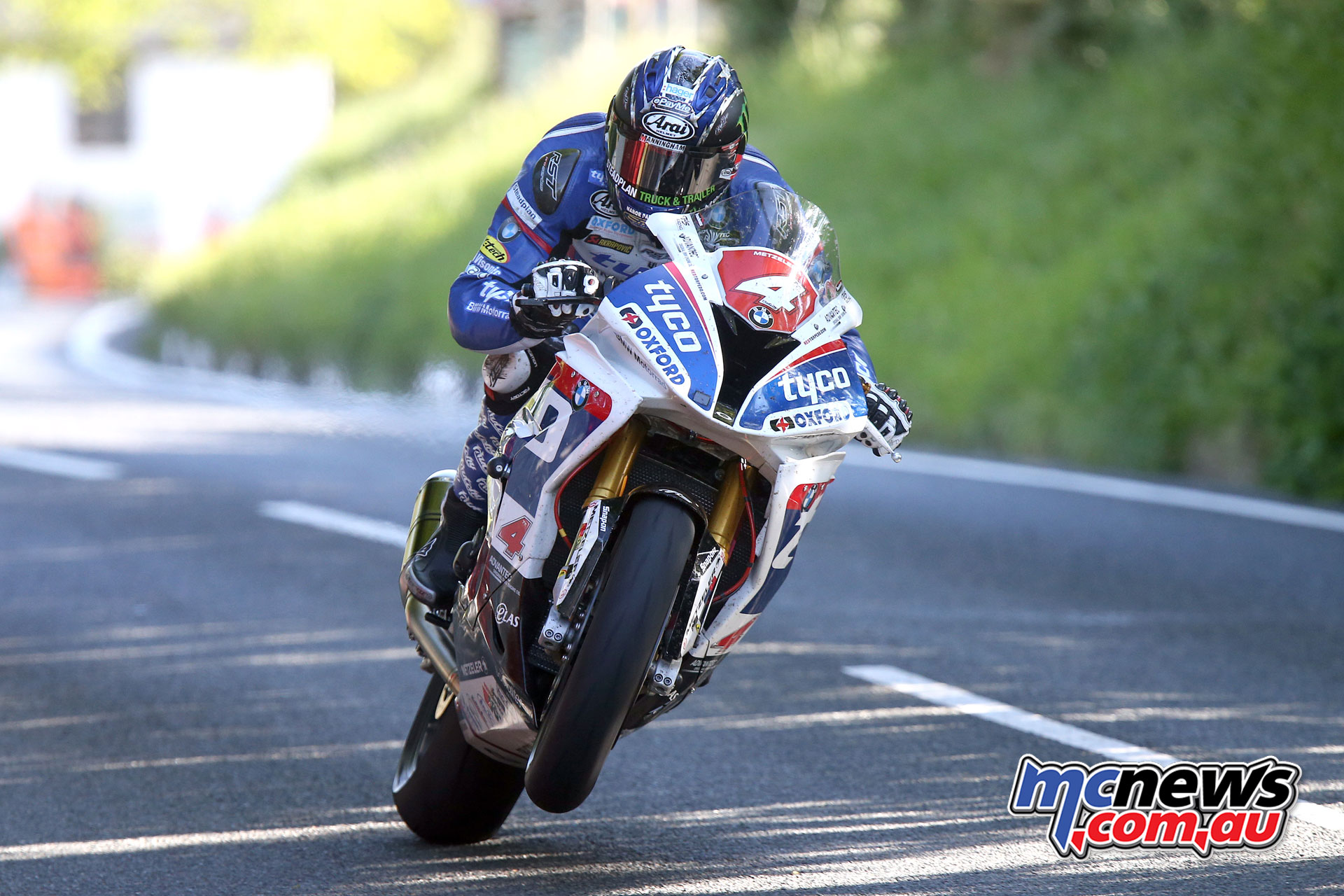
At the 2017 Isle of Man TT BMW riders finished 1-2-3-4 led by Ian Hutchinson.
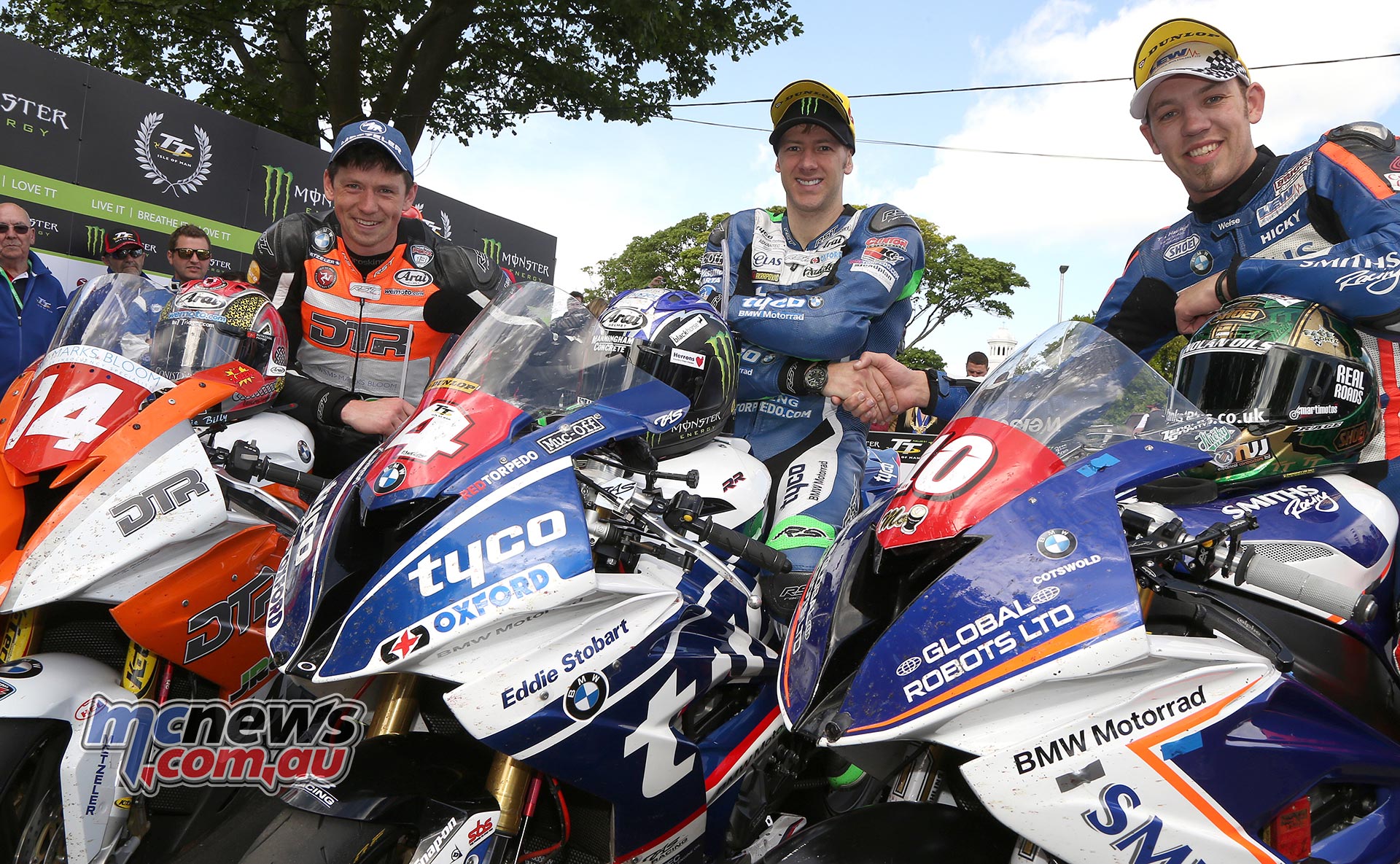
Link – Isle of Man TT Official























